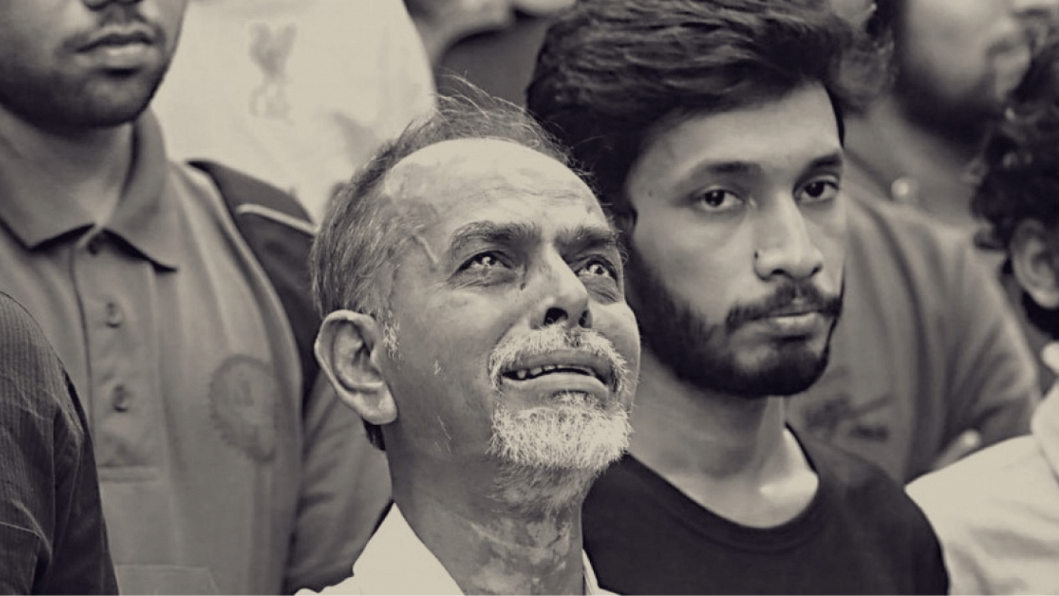Fardin Noor death: An investigation drowning in contradictory findings

Fardin Noor Parash, the third year Bangladesh University of Engineering and Technology (Buet) student and seasoned debater, whose decomposing body was recovered from the Shitalakkhya river in Narayanganj on November 7, had apparently committed suicide. This was revealed by the Detective Branch (DB) of the Dhaka Metropolitan Police and by Rapid Action Battalion (Rab), in a recent twist in the investigation.
Over the last month and a half, the police and Rab on various occasions came up with different narratives to reach a breakthrough in the "murder" case – especially after it was revealed through post-mortem that Fardin had several injury marks on his head and chest –, starting from implying the victim was a druggie and a drug-peddler, to being a victim of misidentification as a police informant, to being killed by the planning of his "girlfriend" or "friend," besmirching his character, and turning this investigation into a mockery of sorts. It has finally been concluded by both the investigating bodies that he died by suicide.
The investigation into the murder/suicide was dramatic from the beginning, with DB conducting an investigation and Rab conducting a shadow investigation, both reaching their own breakthroughs, and then one party contradicting the other's findings. All the while, Fardin's bereaved family, friends, and well-wishers had to witness this painstakingly slow and often unconvincing act.
If one even considers the previous statements of the investigating bodies as exceptional episodes of faux pas and take the recent revelation seriously, one cannot overlook its loose ends. The information just doesn't add up.
First of all, the investigators' suggestion that Fardin committed suicide because he was under pressure due to his dwindling academic performance and his inability to collect enough money for a debate competition in Spain isn't very convincing. It was claimed that Fardin was under pressure to collect Tk 60,000 to attend a debate contest in Spain, which also contributed to his frustration. But it should be noted here that he did manage to collect Tk 40,000 from his friends, and managing the remaining Tk 20,0000 would not have been much of a problem, given that at times universities, faculties and even corporations sponsor meritorious debaters in such circumstances. And, in all likelihood, given that he had been in the debating scene for some time, he would have been aware of such opportunities, too.
Also, if Fardin used to support the education of his two brothers out of the money he earned from tutoring two students and so held that position of responsibility within the household, would he not have thought thoroughly of the consequences of taking his life before going through with such a drastic decision? He was a good debater after all, with the ability to think things through critically.
What is more confusing is that such decisions are often not taken on a whim. Rather these are well-contemplated over a period of time. So how did no one know Fardin had been harbouring such thoughts? Not even those friends who lent him the money, or his debating senior with whom he spoke three to four times on the phone in the hours preceding his disappearance? Nor his friend Bushra, who has been, as of right now, wrongly incarcerated and locked up for more than a month?
Also, given the unclear, nighttime CCTV footage showing a falling body cannot be a clear confirmation of events surrounding Fardin's death – in a world where doctoring of video footage is rampant – , how can law enforcers come to such a conclusion so confidently? Even for a person with a very vivid imagination, it would be a bit too far-fetched to think that Fardin's body colliding with or crashing into the pillar of the Sultana Kamal Bridge (from where he is thought to have jumped into the Shitalakkhya river) would result in the relatively minor injuries, which could have led to, at most, unconsciousness.
Even the new revelation from the police about the extent of Fardin's head injury is not convincing since the autopsy doctor had suggested that there were several injury marks on his head and body, but that does not corroborate the recent statements from law enforcers. If the conduct of the doctor is wrong, he should be questioned thoroughly by law enforcers to find the real reason behind their difference of findings regarding Fardin's injuries.
How wise is it to come to a conclusion about a possible murder case based on loosely connected pieces of evidence, that do not even fully align with various statements that have surfaced from these same law enforcers at various stages of the investigation?
The precedence set by the law enforcers doesn't help their cause, either.
In the past, we have seen law enforcers succumbing to external pressure. Take the case of teenager Tanvir Mohammad Toki, who was killed almost a decade ago on March 6, 2013, and whose body was found in the same Shitalakkhya river, and who is yet to receive justice as little headway has been made in his case in all these years. This is, ironically and frustratingly, despite one of the accused giving a confessional statement implicating influential people from the locality and also within the ruling party in Toki's death, and the media extensively reporting on it.
It looks like investigation into Fardin's potential murder could also be heading in a similar direction.
The investigation so far needs to be revisited and law enforcers need to come up with solid evidence to substantiate their claims before updating the public in the future. Their constantly changing narratives are not helping their cause, only confusing the people and the victim's family.
Law enforcers hold a very serious responsibility here – of delivering justice and living up to the people's expectations. They should understand the weight their words hold and ensure proper investigation into Fardin's death.
Tasneem Tayeb is a columnist for The Daily Star. Her Twitter handle is @tasneem_tayeb

 For all latest news, follow The Daily Star's Google News channel.
For all latest news, follow The Daily Star's Google News channel. 










Comments